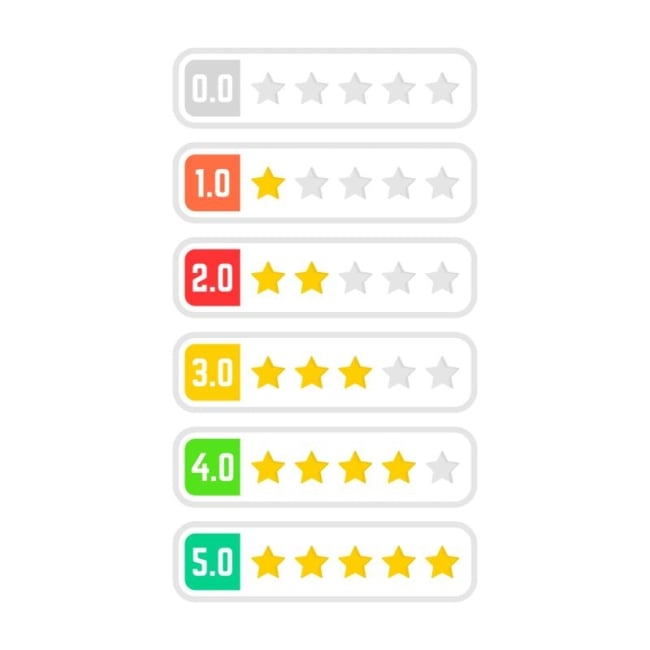You have /5 articles left.
Sign up for a free account or log in.

Infadel/istock/getty images plus
Every year I have mixed feelings about returning to my office in January. I’ve turned in grades and organized piles of notes into labeled files. Classes that consumed me for three months are packed away like holiday decorations. My energy is returning. But one piece of unfinished business lingers: I have to read my fall course evaluations.
For three decades, I’ve read my own evaluations plus those of other faculty members in the writing program that I direct. I offer my colleagues solid advice: look for patterns of strengths and weaknesses; recognize identity-based judgements that are concerning in their own right but not really about teaching; don’t agonize over idiosyncratic comments, like my own favorite—“great teacher but she wears the ugliest shoes I’ve ever seen.”
But I’ve tended to ignore this advice when I read my own evaluations. I hover over the slightest negative response and often feel defeated. Transforming my relationship to feedback required a new mind-set beyond standard academic advice.
My recent life coach training prompted me to think more broadly about how I respond to feedback and evaluation. Through behavior-modification practice, I work with clients to identify and interrupt self-limiting patterns. Coaching tools helped me see how much baggage I was carrying as I read course evaluations.
One strategy for change is success coach Jack Canfield’s E + R = O formula. An Event occurs, I choose how to Respond and my response informs the Outcome. For example, imagine I receive and then read (note bad habit here) a brief email from a committee member at 10 p.m. asking if I’ve had a chance to update the staffing spreadsheet he requested. Suddenly I’m buzzing with adrenaline. I sent a link to the updated spreadsheet two days ago with a message explaining the revisions. Is my colleague questioning my competence? Does he think I’m not doing my job? Now I’m huffing and puffing, reading to fire off a passive-aggressive email.
But why?
Applying E + R = O encourages me to look beyond assumptions and imagine what might be going on in my colleague’s life. Maybe he has a terrible headache or his dog is dying. Maybe an aging parent has fallen and he’s trying to manage care from a thousand miles away. Maybe he was adrift in email this week, as I was, and my message slipped to a second or third screen. I summon more compassion than I felt during my initial reading and view the message for what it is: a question seeking a response that can wait until morning.
As I eased into my advanced writing seminar evaluations this January, I intended to be mindful of my response. I skimmed pie charts and noted large sections of red (“all the time”) and blue (“most of the time”) that confirmed I was organized, designed relevant assignments and gave helpful feedback. Feeling more confident, I peeked at the narrative responses. They learned to revise. They felt more confident as writers. Genre now made sense. So far, all good.
Within these comments, a student recalled in scene-level detail the moment that I helped her manage a panic attack. Although this story may say more about who I am as a person than a teacher, it reminded me that the line is always blurred, as I bring my whole self to teaching.
Given the positive pattern of feedback, I wasn’t prepared for the final open-ended response. It exceeded two typed pages. With none of the lyric quality of the panic attack story, it characterized me as rigid and too focused on the syllabus. Why, it wondered, did I not let each day’s activity wander more organically? Further and deeper it went into a narrative of my neglect for students’ feelings. I started to wallow and doubt all of the positive responses. I should pay attention to criticism to grow, right?
Let’s step back for a minute. Wallowing and growing are not the same. As I later wrote to the department chair when I shared my evaluations, that final comment is somewhat accurate. The course draws students with a broad range of preparation. I was trying to reach a common denominator of knowledge and skills, but this student felt ignored as a writer and a human being. I acknowledged, understood and needed to move on.
Obviously, I’m still thinking about that particular comment, but my response is changing. Defensiveness has given way to empathy as I reconstruct my response. I’m already nostalgic for the group’s quirky conversations about gratitude as we read Ross Gay’s Catalog of Unabashed Gratitude. Students described losing the last of their childhood during the pandemic. They measured gratitude with unlikely spoons. Perhaps the evaluation writer was experiencing more than frustration with my teaching. Could the words have been fueled by loneliness, hunger, a breakup, a breakdown or the urgent need for sleep? The criticism was full of anger but also full of need. For what, exactly, I may never know.
I do know, however, that reading course evaluations for only negative voices is self-limiting. When we reject voices of appreciation, we reject evidence of our own good work.
A few days after I read my evaluations, an unlikely voice gave me a final shove toward change. I was blissfully off the grid, skiing and reading Louise Penny’s A Trick of the Light. Penny fans will be familiar with Three Pines, a fictional village south of Montreal that is home to artists, antique dealers, retired professionals and the profane but profound old poet Ruth Zardo. Murder after murder brings Chief Inspector Armand Gamache to Three Pines. In A Trick of the Light, the murder occurs just after Clara Morrow’s first solo art show at a major gallery. The New York Times and The London Times praise Clara’s art. When Ruth asks Clara what the critics wrote, Clara quotes a negative review. It’s the only one she remembers. Ruth had already read the positive reviews and confides that she can recall only negative reviews of her books. When Ruth then quotes the praise for Clara’s art, Clara wonders if dwelling on negative reviews will make her, like Ruth, bitter from an artist’s pull between doubt and hope.
I’m not dismissing my recent negative evaluation. It has its place in the class archive. So does the care that students took with their work and with each other. Several times a day I pass a poetry exhibit they curated near my office. It’s the artifact and measure I choose to reflect on.
We know the problems with student evaluations. As long as the process exists, we can center constructive praise while watching for patterns that call for change. We can borrow from unlikely sources to transform our teaching as students navigate mental health crises, debt and loss in forms we can’t see. And we can respond with compassion for students and for ourselves to acknowledge the complex contexts of course evaluations and make sure we hear the positive feedback.




